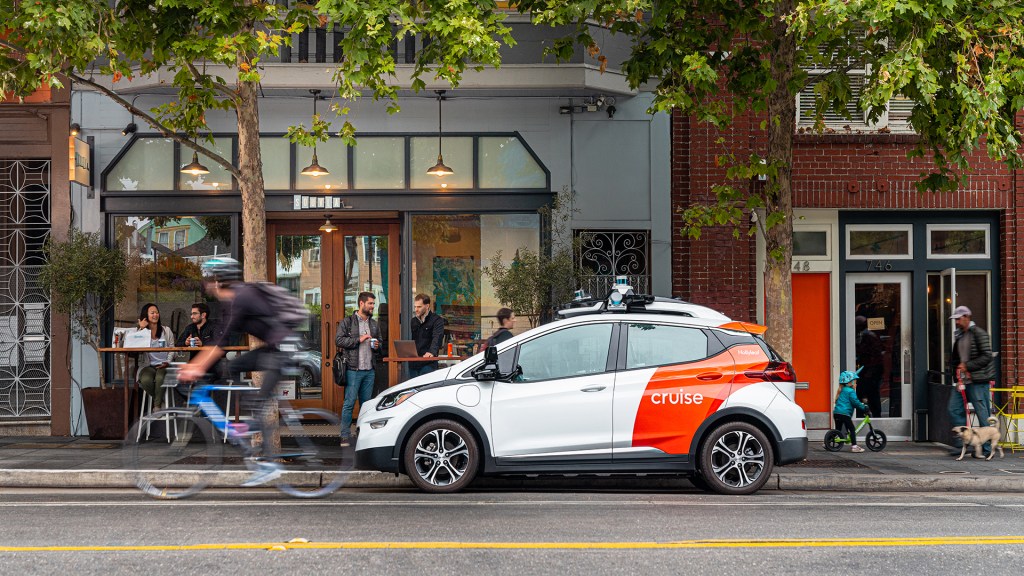Cruise, the autonomous vehicle subsidiary of GM that also has backing from SoftBank Vision Fund, Microsoft and Honda, has secured a permit that will allow the company to shuttle passengers in its test vehicles without a human safety operator behind the wheel.
The permit, issued by the California Public Utilities Commission as part of its driverless pilot program, is one of several regulatory requirements autonomous vehicle companies must meet before they can deploy commercially. This permit is important — and Cruise is the first to land this particular one — but it does not allow the company to charge passengers for any rides in test AVs.
“In order to launch a commercial service for passengers here in the state of California, you need both the California DMV and the California PUC to issue deployment permits. Today we are honored to have been the first to receive a driverless autonomous service permit to test transporting passengers from the California PUC,” Prashanthi Raman, Cruise’s director of Government Affairs said in an emailed statement to TechCrunch.
There are two regulatory bodies, the CPUC and the California Department of Motor Vehicles, that dictate the testing and eventual deployment of autonomous vehicles. The California DMV regulates testing of autonomous vehicles with and without safety operators. About 55 companies have permits to test autonomous vehicles with a safety driver. Driverless testing permits, in which a human operator is not behind the wheel, have become the new milestone and a required step for companies that want to launch a commercial robotaxi or delivery service in the state. AutoX, Baidu, Cruise, Nuro, Pony.ai, Waymo, WeRide and Zoox have driverless permits with the DMV.
The final step with the DMV, which only Nuro has achieved, is a deployment permit. This permit allows Nuro to deploy at a commercial scale. Nuro’s vehicles can’t hold passengers, just cargo, which allows the company to bypass the CPUC permitting process.
Over at the CPUC, there are “drivered” and “driverless” permits, which allow companies to give rides in their autonomous vehicles. Aurora, AutoX, Cruise, Deeproute.ai, Pony, Voyage (which was acquired by Cruise) Waymo and Zoox all have “drivered” permits. Cruise is the first to snag the driverless permit.
Any company that wants to eventually shuttle and charge passengers for rides in their robotaxis have to secure all of these permits from the DMV and CPUC.
“Issuance of this first driverless permit for the CPUC’s Autonomous Vehicle Passenger Service Pilot Programs is a significant milestone. Autonomous vehicles have the potential to transform our transportation system and communities by solving individual mobility needs, improving roadway safety, and moving goods throughout the state sustainably and efficiently,” Commissioner Genevieve Shiroma said in statement. “The effective deployment of autonomous vehicles can also transform vehicle manufacturing, maintenance, and service business models to create new jobs and industries for the California workforce.”
Last year, the CPUC approved two new programs to allow permitted companies to provide and charge for shared rides in autonomous vehicles as long as they can navigate the lengthy regulatory process. The decision came after months of lobbying by the AV industry pushing the CPUC to consider a rule change that would allow for operators to charge a fare and offer shared rides in driverless vehicles.
The CPUC said Cruise, along with any other company that eventually participates in the pilot, must submit quarterly reports about the operation of their vehicles providing driverless AV passenger service. Companies must also submit a passenger safety plan that outlines their plans for protecting passenger safety for driverless operations.































Comment